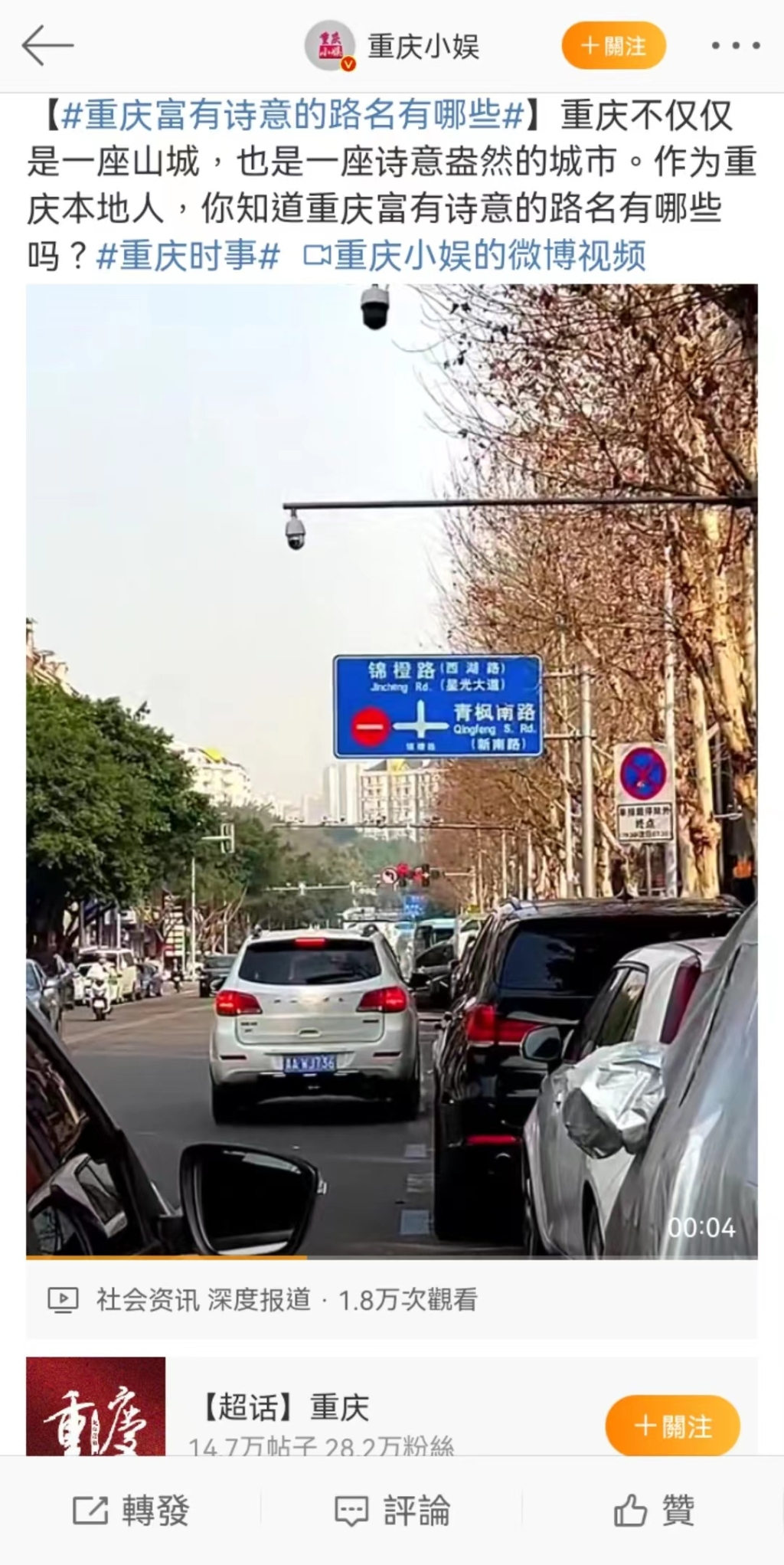Chongqing News
Do you know why those places in Chongqing are poetically named?
2023-03-15 14:12:14
CHONGQING (CQNEWS) -- Chongqing is more than a mountainous city; it is beautiful and poetic. Some places in Chongqing have gone viral online recently for their poetic names, such as Haitang Xiaoyue (malus spectabilis with the moon in a breeze), Yanyu (misty rain) Road, Jincheng (glorious oranges) Road, Cangbai (pale white and blue) Road, and Qiangwei (roses) Road. Let’s see why those places are poetically named.

Those names carry homesickness and culture
The data show that “Haitang Yanyu (malus spectabilis and misty rain)” is located in the Haitang River, Nan’an District. Clusters of flowers, especially malus spectabilis, grew along the banks of the Haitang River in the Tang Dynasty. The bright colors and sweet fragrance of the malus spectabilis made Chongqing one of the “twelve Bayu attractions” and a good place to enjoy flowers.
The picturesque is also one of the important ferries in Chongqing. The invisible malus spectabilis in the misty rain is unique memories enshrined in the minds of the older generation of Chongqing natives.
It was not until the opening of the Shibanpo Yangtze River Bridge built in the early 1980s that the Hangtang River no longer served as a ferry. As the land was filled and the old stone bridge disappeared, the river that rose and fell with the Yangtze River was also gone. People no longer saw the misty rain over the river.
With the development of urban construction, the Haitang River has become a sub-district surrounded by highways and tall houses instead of delicate flowers. Haitang Yanyu, however, has become an interesting story going on for many centuries and lived in people’s memories.
Yanyu Road, previously named Yanyupo, was located on the bank of the Haitang River. It is now situated between Dongyuan 1891 and Sheraton on Nanbin Road. It’s also named after “malus spectabilis and misty rain”.
While "Begonia Misty Rain", "Begonia Creek" and "Misty Rain Road" were named after their natural landscapes, Cangbai Road, a popular tourist attraction next to Hongyadong in Chongqing, was named after a man. Cangbai Road, previously named Paotai Street, was renamed in honor of Yang Cangbai, a modern bourgeois revolutionary propagandist, political activist, educator, and famous poet.
On July 19, 1943, the National Government established the memorial hall of Mr. Yang Cangbai at the former site of Chongqing Fuzhong School, where Yang Cangbai started his revolutionary cause. The Paotai Street, where the school was located, was also renamed Cangbai Road in memory of this hero of the Revolution of 1911.
Preservation of place names retains the feeling of homesickness
Each place has its meaningful name and each name carries a unique way of life.
According to the place naming office of the Chongqing Municipal Civil Affairs Bureau, the general office of the Chongqing government released Chongqing Geographical Names and Cultural Heritage Protection Scheme as early as June 2017. The general offices of the Chongqing Municipal Party Committee and the Chongqing government then released Opinions on Strengthening Historical and Cultural Heritage Protection in Urban and Rural Planning and Construction in July 2022 to clarify the measures for geographical names and cultural heritage protection.
At the same time, Chongqing created two lists of protected geographical names, which include names of 211 municipal-level historical places and 3,500 places at the district and county levels. It is clarified that the historical place under protection cannot be renamed. 54 historically and culturally famous towns and 46 historically famous villages have been selected. According to the List of Disappeared Places in Downtown Chongqing, the names of 15 disappeared places have been reused.
The preservation of place names requires the protection of old names and the standardization of new names. Chongqing insists that the new names of places should reflect their local geographical, historical, and cultural features, respect the wishes of local people and facilitate their production and life. 1,666 places in downtown Chongqing have been named since 2012. In 2022, 163 irregular place names in Chongqing were standardized, 15 rail stations were renamed and 1,055 irregular signs of place names were rectified. (Translated by Yuki, Fathom Language Limited)
Editor:Jiang Yiwei
 手机阅读分享话题
手机阅读分享话题